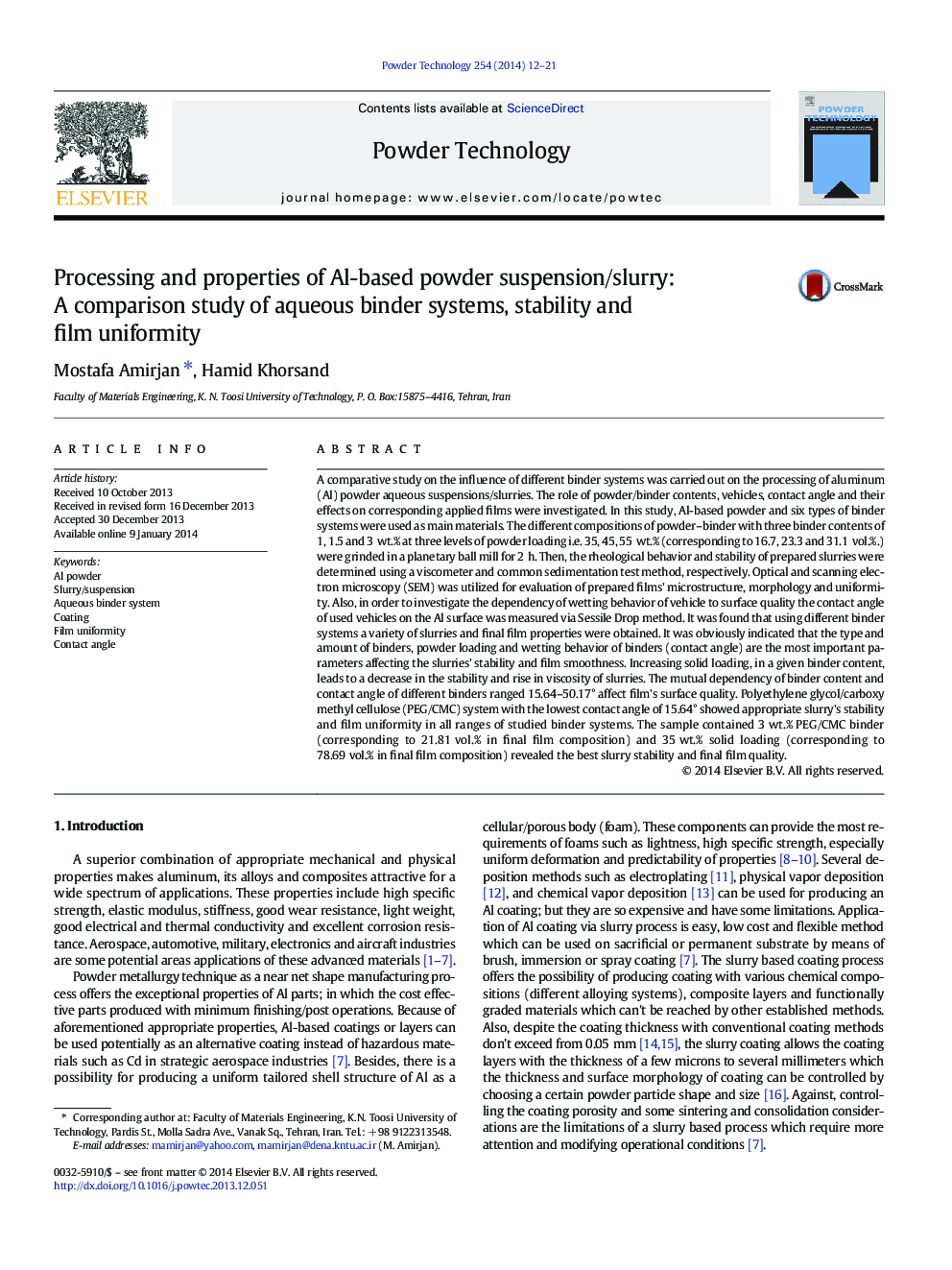| Article ID | Journal | Published Year | Pages | File Type |
|---|---|---|---|---|
| 236222 | Powder Technology | 2014 | 10 Pages |
•Systematic study of Aluminum powder based aqueous suspension/slurry with different binders.•Effect of binder type and content and powder loading on suspension stability and film uniformity.•Surface quality of films regarding binders’ contact angle and binder content, mutually.
A comparative study on the influence of different binder systems was carried out on the processing of aluminum (Al) powder aqueous suspensions/slurries. The role of powder/binder contents, vehicles, contact angle and their effects on corresponding applied films were investigated. In this study, Al-based powder and six types of binder systems were used as main materials. The different compositions of powder–binder with three binder contents of 1, 1.5 and 3 wt.% at three levels of powder loading i.e. 35, 45, 55 wt.% (corresponding to 16.7, 23.3 and 31.1 vol.%.) were grinded in a planetary ball mill for 2 h. Then, the rheological behavior and stability of prepared slurries were determined using a viscometer and common sedimentation test method, respectively. Optical and scanning electron microscopy (SEM) was utilized for evaluation of prepared films' microstructure, morphology and uniformity. Also, in order to investigate the dependency of wetting behavior of vehicle to surface quality the contact angle of used vehicles on the Al surface was measured via Sessile Drop method. It was found that using different binder systems a variety of slurries and final film properties were obtained. It was obviously indicated that the type and amount of binders, powder loading and wetting behavior of binders (contact angle) are the most important parameters affecting the slurries' stability and film smoothness. Increasing solid loading, in a given binder content, leads to a decrease in the stability and rise in viscosity of slurries. The mutual dependency of binder content and contact angle of different binders ranged 15.64–50.17° affect film's surface quality. Polyethylene glycol/carboxy methyl cellulose (PEG/CMC) system with the lowest contact angle of 15.64° showed appropriate slurry's stability and film uniformity in all ranges of studied binder systems. The sample contained 3 wt.% PEG/CMC binder (corresponding to 21.81 vol.% in final film composition) and 35 wt.% solid loading (corresponding to 78.69 vol.% in final film composition) revealed the best slurry stability and final film quality.
Graphical abstractFigure optionsDownload full-size imageDownload as PowerPoint slide
